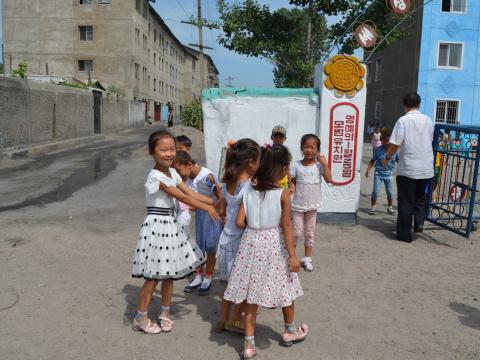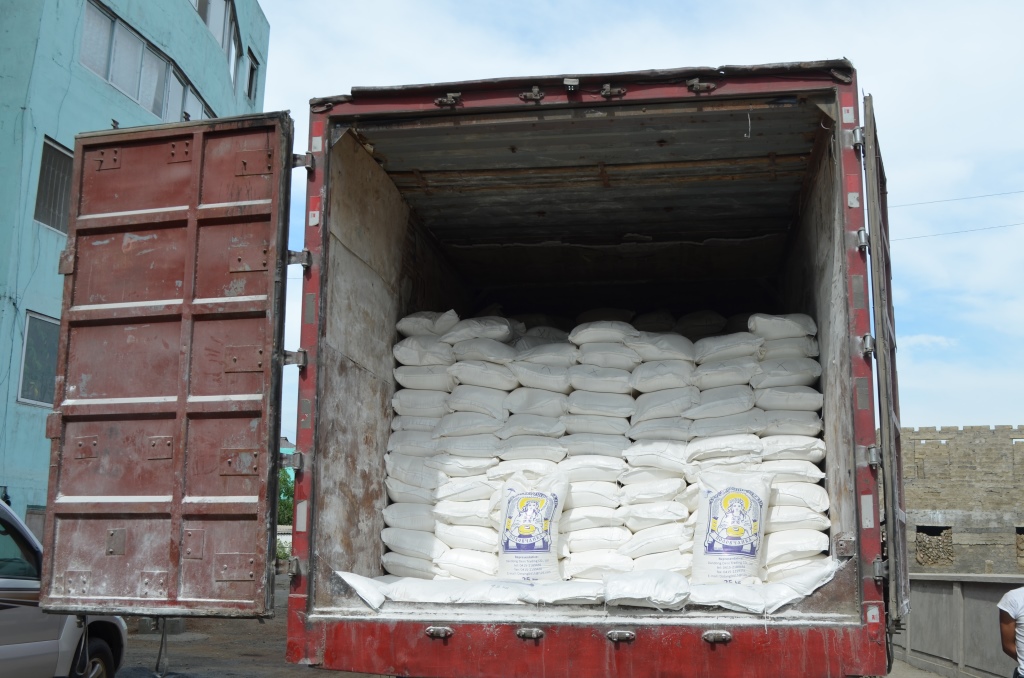Helping DPRK Communities endure the “Barley Hill” climb

The people of the Democratic People's Republic of Korea (also known as DPRK, and North Korea) are currently experiencing chronic food insecurity throughout the country.
United Nations experts estimate that more than 10 million people, about two in five of the population, are in urgent need of food assistance[1]. Food insecurity becomes most severe during “barley hill,” the lean season, between March and September, when food is hardest to find.
According to the Rapid Food Security Assessment report produced jointly by the United Nations Food and Agriculture Organisation and the World Food Programme, less than five million metric tonnes of food was produced in 2018, the smallest amount in the last decade and 12 per cent below the previous year. This year, the United Nations estimates that North Korean farmers will produce 1.36 million metric tonnes less food than the country needs.
World Vision is providing wheat flour and soy oil to provide supplementary meals to 51,500 children in their nurseries and kindergartens in four counties of two provinces.
Turning Flour into Noodles
Bang, 42, a supervisor at the Anju Food Distribution Centre, greets World Vision warmly and with a sense of excitement that she can’t seem to contain.
“We are in the middle of the lean season in our country, so the flour from World Vision is of great help to all of us. We only get about 50 per cent of our government ration right now. Worldn Vision is helping us survive the barley hill,” says Bang.
About a month and a half ago, Anju received a large package of fortified wheat flour from World Vision. As a result, the entire community was grateful that the city’s 14,292 children will have plenty of food to eat in their nurseries and kindergartens until the fall harvest.
“The quality of the fortified wheat flour that we received from World Vision in June is excellent. The noodles are chewy and delicious, and the children ask for seconds because they like it so much,” says Bang.
The flour is stored in a central warehouse that Bang oversees. Some of the flour is used to make noodles at Anju’s central noodle machine, located in the same compound, while a smaller portion of the flour is distributed directly to the community’s 34 nurseries and 40 kindergartens, where it is used to prepare pancakes, fried dough, and other types of food.
“Children have more energy now and [are] playing well because they are eating well at school. They are no longer complaining about being hungry at home. This makes the parents really happy,” shares Bang. “Parents also say the children are full, satisfied and are able to enjoy a good nights’ sleep now,” she adds.
Namhung Kindergaretn
Namhung Kindergarten provides care for 487 children between the ages of five and seven. Even before World Vision staff enter the school property, children have spotted the staff from the playground and come running out towards them to welcome them with a local greeting of a deep bow.
Choe, a kindergarten principal for the past 6 years, tells World Vision staff how happy the school is with assistance they have provided in the form of high-quality fortified wheat flour.
“The children really enjoy eating noodles made with the flour,” says Choe.
The kindergarten typically provides noodles with vegetables for lunch and pancakes or fried dough for an afternoon snack.
“There is a lot of improvement in the quantity of food consumed by children because of the high-quality flour provided by World Vision. We have also noticed that digestion among children has improved significantly. There are fewer cases of diarrhoea or stomach ailments among the children attending our school,” shares Choe.
The kitchen and storage room stock vegetables, like cucumbers, eggplants, potatoes, seaweed, and eggs that the kindergarten receives from the government to feed the children.
At the end of June 2019, World Vision also donated soybean cooking oil to Anju, which is used by the school to cook meals for the children.
New Beginnings
In August, as part of the organisation’s efforts to reduce the food deficit across the country, World Vision also began providing food assistance to Unsan and Sunchon counties.
"Before having access to any assistance, we were able to provide only 200 grams of grain per child per day," says Go, the supervisor of the Food Distribution Center, in Unsan.
Last year, Anju, Sunchon, and Unsan (South Pyongan Province), and Samjiyon County (Ryanggang Province) saw a 20-30 per cent decrease in harvest yield due to a prolonged period of high temperatures and drought. The communities are experiencing the same type of heat and drought this year.
"Farmers are experiencing challenges due to extreme weather conditions, including drought and heatwaves. In the past, when peopled talked about natural disasters, they were referring only to floods. Now, heatwaves and the drought are becoming increasingly dangerous," says Soh from the Cultural Affairs Department.
In both Unsan and Sunchon, World Vision’s flour will be distributed to all children in nurseries and kindergartens, providing daily meals to more than 34,000 children under the age of seven.

[1] FAO/WFP Joint Rapid Food Security Assessment, May 2019. http://www.fao.org/3/ca4447en/CA4447EN.pdf